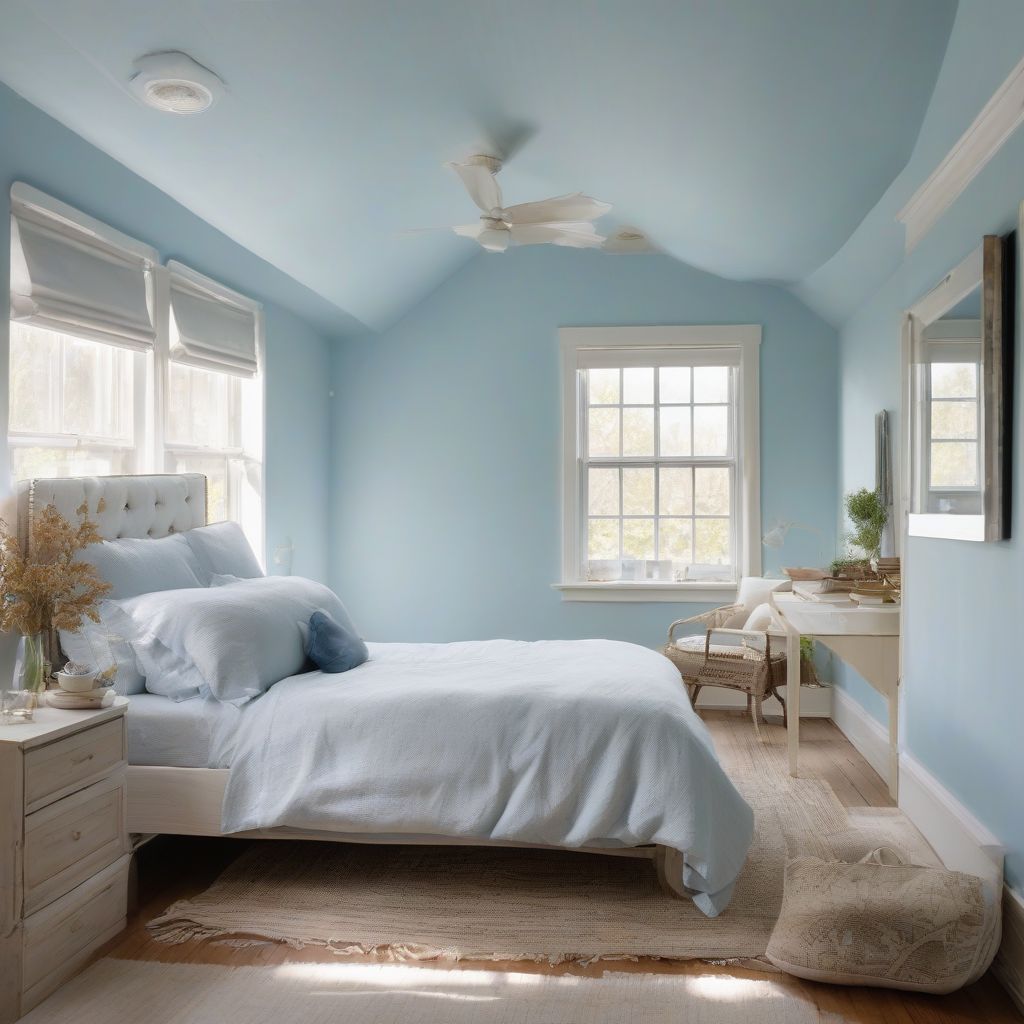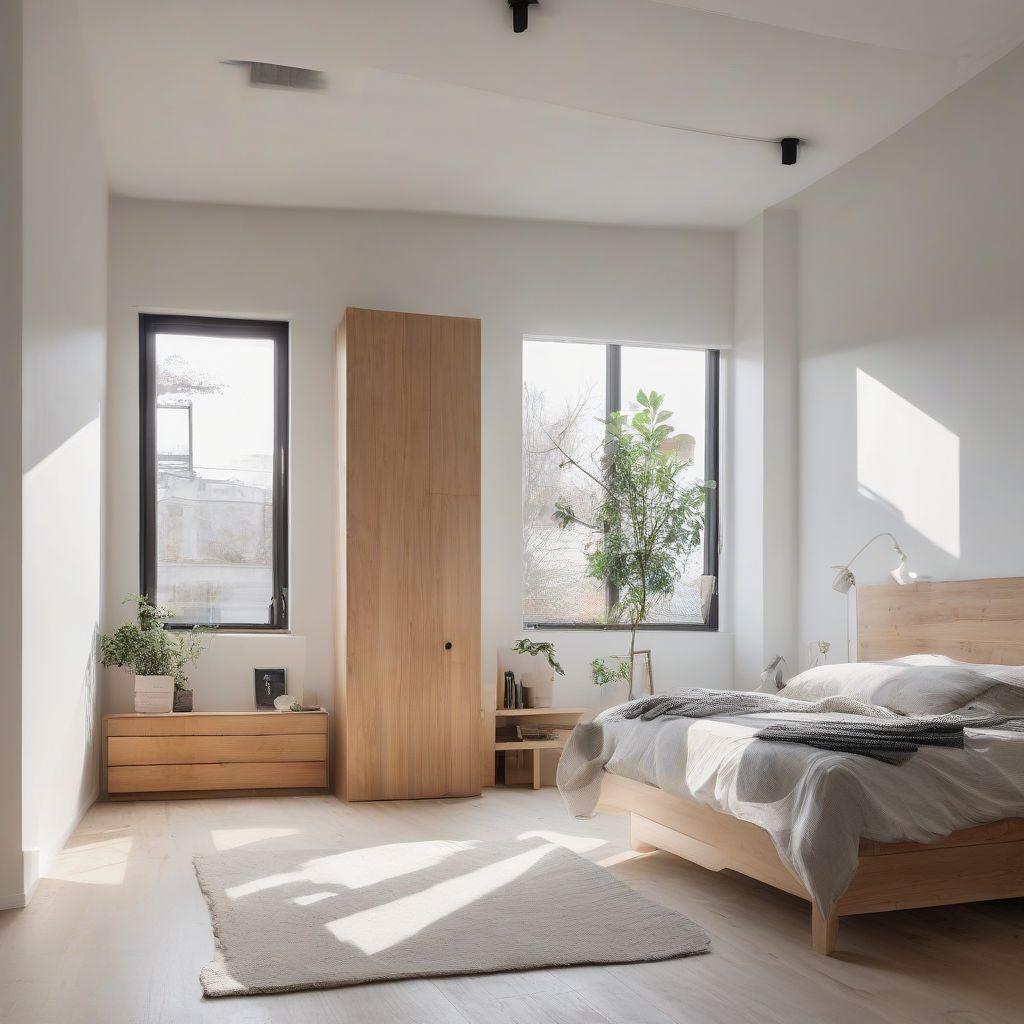“A good laugh and a long sleep are the two best cures for anything.” – Irish Proverb.
We all crave a good night’s sleep. It’s essential for our physical and mental well-being. While countless factors contribute to quality sleep, the color of your bedroom walls might be more impactful than you think. The right colors can transform your bedroom into a haven of peace, lulling you into a deep and restful sleep. So, what are the best colors for a serene and calming bedroom? Let’s dive in!
Understanding the Psychology of Color
Believe it or not, colors can significantly impact our mood and emotions. This fascinating field of study, known as color psychology, explores how different colors elicit various psychological responses. Warm colors like red and orange tend to energize and stimulate, making them poor choices for a bedroom. In contrast, cool colors, including blues, greens, and purples, are often associated with feelings of calmness, relaxation, and tranquility, making them ideal for a sleep sanctuary.
The Best Colors for a Serene and Calming Bedroom
1. Blue: The Color of Tranquility
Blue, often associated with the vastness of the ocean and the serenity of a clear sky, is a classic choice for bedrooms. It’s known to reduce blood pressure, slow down the heart rate, and promote relaxation.
- Light Blue: Evokes a sense of airiness and spaciousness, perfect for smaller bedrooms.
- Medium Blue: Offers a calming and balanced atmosphere, conducive to sleep.
- Dark Blue: Can create a cozy and intimate ambiance, ideal for larger bedrooms.
 Calm Blue Bedroom
Calm Blue Bedroom
2. Green: The Color of Nature
Green is inherently calming and refreshing, reminding us of nature’s tranquility. This color can reduce stress, promote feelings of peace, and even improve sleep quality.
- Light Green: Creates a light and airy feel, ideal for bedrooms with limited natural light.
- Sage Green: Offers a sense of sophistication and elegance, perfect for creating a restful retreat.
- Olive Green: Provides a warm and grounding atmosphere, perfect for those seeking a cozy and inviting bedroom.
3. Lavender: The Color of Serenity
Lavender, with its delicate floral aroma and soft hue, has long been associated with relaxation and sleep. Its calming effect can reduce anxiety and promote restful sleep.
- Light Lavender: Creates a soft and romantic atmosphere, ideal for creating a tranquil retreat.
- Deep Lavender: Can add a touch of drama and sophistication to the bedroom, making it feel luxurious and inviting.
4. Neutral Colors: The Foundation of Peace
While cool colors are often favored for their calming effects, neutral colors provide a perfect blank canvas for a serene bedroom.
- White: Creates a sense of cleanliness, spaciousness, and airiness, making it an excellent choice for smaller bedrooms.
- Beige: Offers a warm and inviting atmosphere, promoting feelings of comfort and relaxation.
- Gray: Can be both calming and sophisticated, depending on the shade, making it a versatile choice for bedrooms.
 Neutral Color Bedroom
Neutral Color Bedroom
Tips for Incorporating Color into Your Bedroom
- Start with the 60-30-10 Rule: A classic interior design principle, this rule suggests using 60% of a dominant color (your chosen calming color), 30% of a secondary color (a complementary hue), and 10% of an accent color (pops of bolder colors).
- Consider the Mood You Want to Create: While all the colors listed above promote calmness, consider their subtle differences. Do you want a light and airy feel or a more cozy and intimate atmosphere?
- Don’t Be Afraid to Experiment: Start with a small area, like an accent wall, before committing to painting the entire room. You can also incorporate calming colors through bedding, curtains, and accessories.
Beyond Color: Additional Tips for a Serene Bedroom
- Declutter and Organize: A cluttered space can lead to a cluttered mind. Take the time to declutter and organize your bedroom, creating a more peaceful and relaxing environment.
- Invest in Comfortable Bedding: High-quality bedding can make all the difference in getting a good night’s sleep.
- Control Light and Sound: Invest in blackout curtains to block out unwanted light and consider a white noise machine to minimize disruptive sounds.
- Add a Touch of Nature: Bring the outdoors in with houseplants, which can purify the air and create a more calming atmosphere.
No products found.
Conclusion
Choosing the right color palette for your bedroom can significantly impact your sleep quality and overall well-being. By opting for calming colors like blue, green, lavender, or neutrals, you can transform your bedroom into a sanctuary of peace and tranquility, promoting relaxation and restful sleep.
Ready to create your perfect sleep haven? Experiment with these calming colors and see what works best for you. And remember, a good night’s sleep is just a fresh coat of paint away. If you enjoyed these tips, share them with a friend, and be sure to explore our other articles on creating a stylish and healthy home.
